Production Paperwork
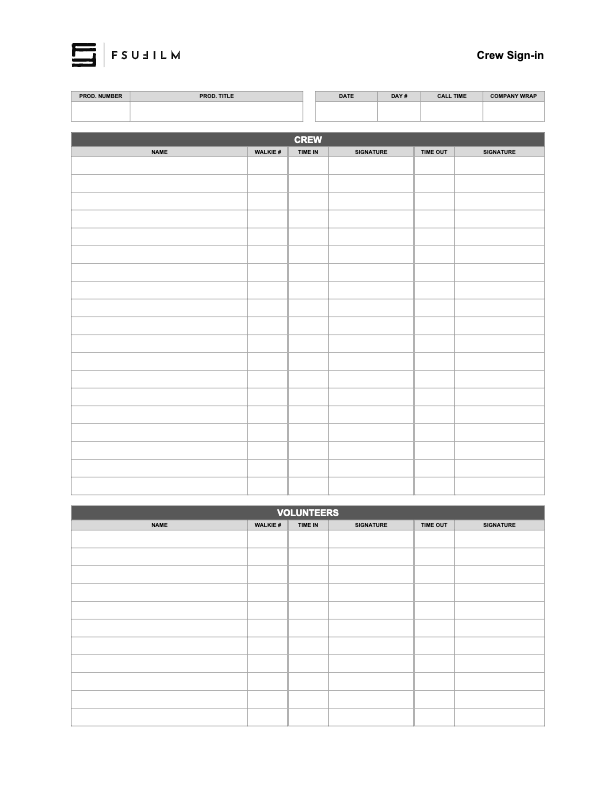
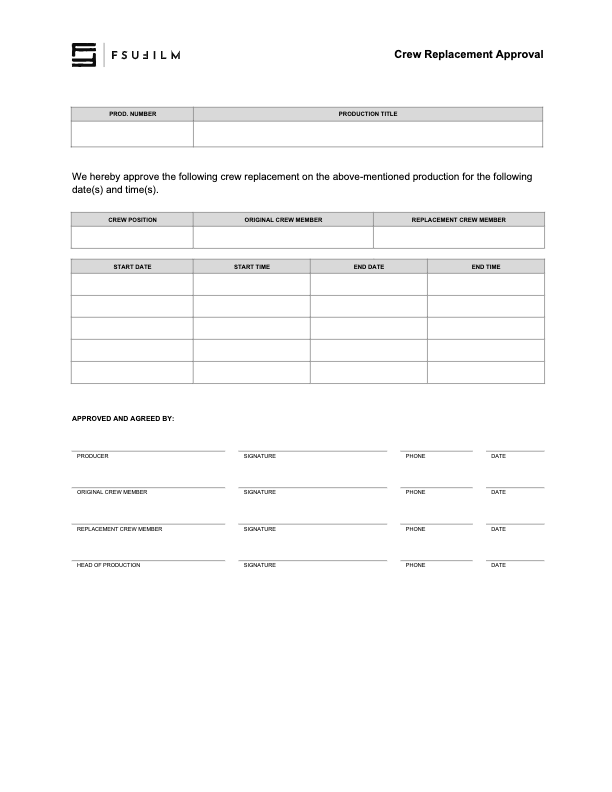
This paperwork should be submitted when requesting that a crew member be replaced by another student. It requires the signatures of both the original crew member and their replacement, as well as the Producer and the Head of Production.
If crew members are switching positions on a productions, a separate form should be submitted for each crew position.
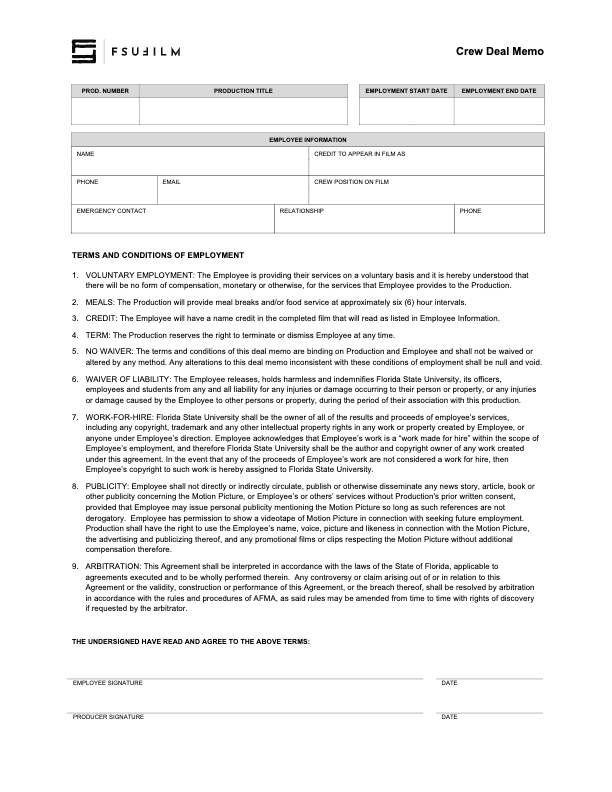
The Producer must ensure that all crew members complete a Crew Deal Memo at the start of the period of employment on the production. The deal memo outlines the terms and conditions of employment (which may not be modified) and defines the screen credit in the finished film.
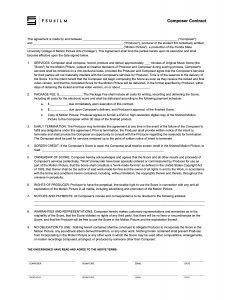
The Producer should use this contract agreement with a Composer who is writing the musical score for a production. It should be used regardless of whether or not the composer is being paid for their services.
The Producer is responsible for working with the Composer to determine the due date, the compensation structure, and the screen credit in the finished film.
It is advisable to make the delivery date of the score (in Section 1 of the contract) as early as is feasible, in order to provide some padding. It is not uncommon for composers on student films to miss their deadline, so it’s better to assume that that might happen than to hope for the best. Most ideal would be setting delivery of the score for a date during the sound editing phase, so that you have a better sense of how everything’s coming together. If that’s not viable, set delivery for as many days before the mix date as your composer’s schedule will allow.
All other clauses in the agreement must remain unchanged, unless the Producer is authorized in advance by the Head of Production to make specific amendments to the contract.
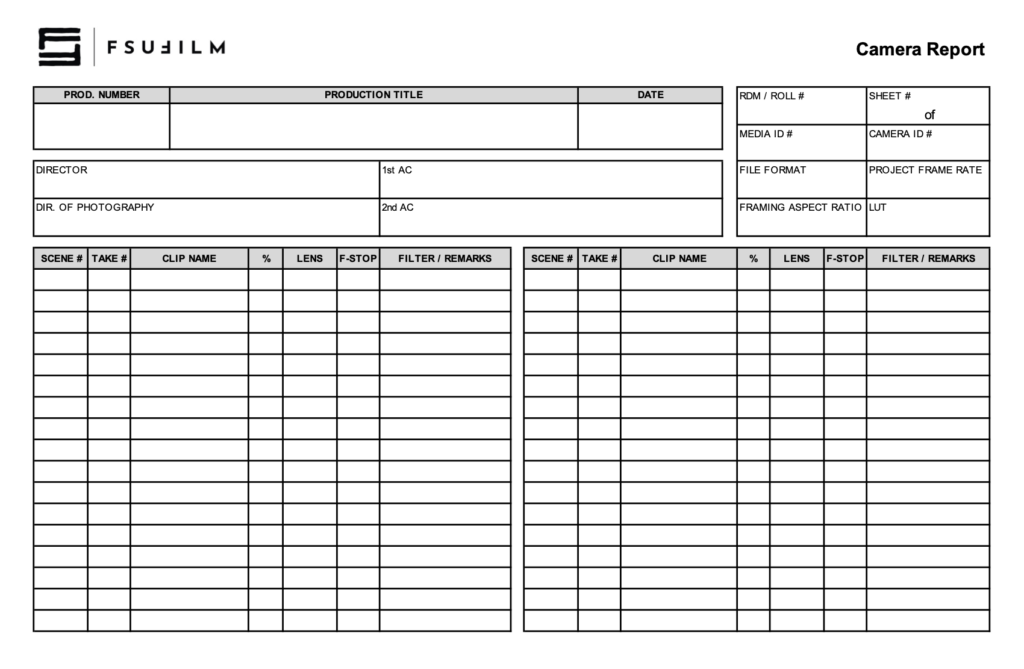
The 2nd AC completes the Camera Report. For the info in the top-right corner:
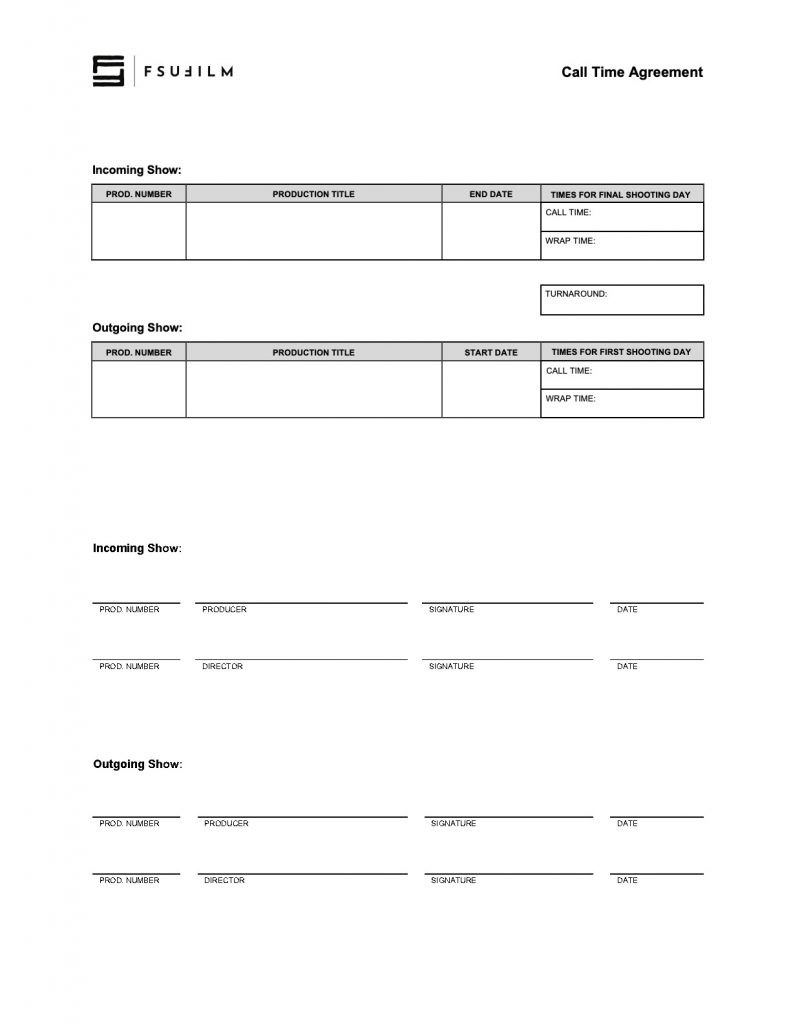
This is a form for producers and directors to use when coordinating wrap times and call times for shows that shoot on consecutive days. Its purpose is to ensure that a minimum turnaround of 10 hours occurs between the company wrap on the incoming show and the call time the next day on the outgoing show.
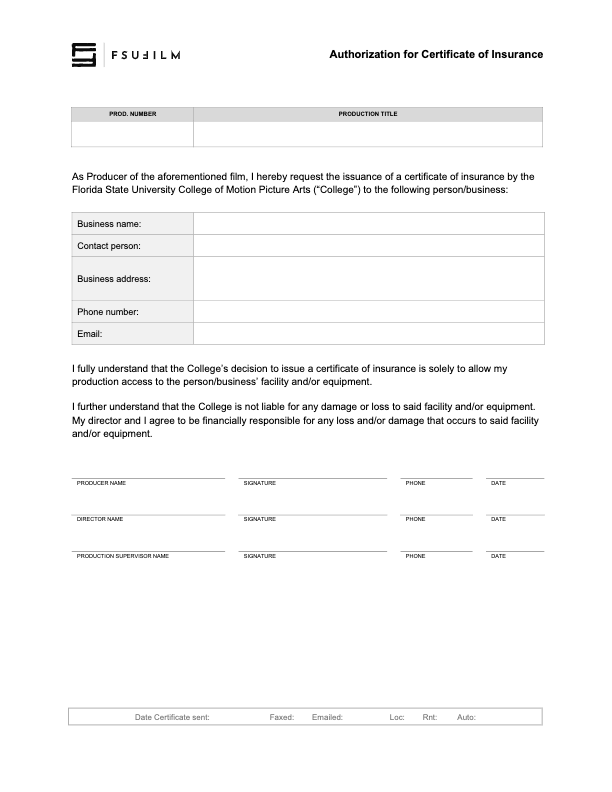
The Producer of a film should submit this form to the Head of Production to request the issuance of a Certificate of Insurance by the College of Motion Picture Arts to a business or individual that has requested one.
If the College issues a Certificate of Insurance, it is solely to allow access to the facility and/or equipment that the business or individual is offering the production. The College is not liable for any damage or loss to said facility and/or equipment. The Producer and Director will be financially responsible for any damage or loss to said facility and/or equipment.
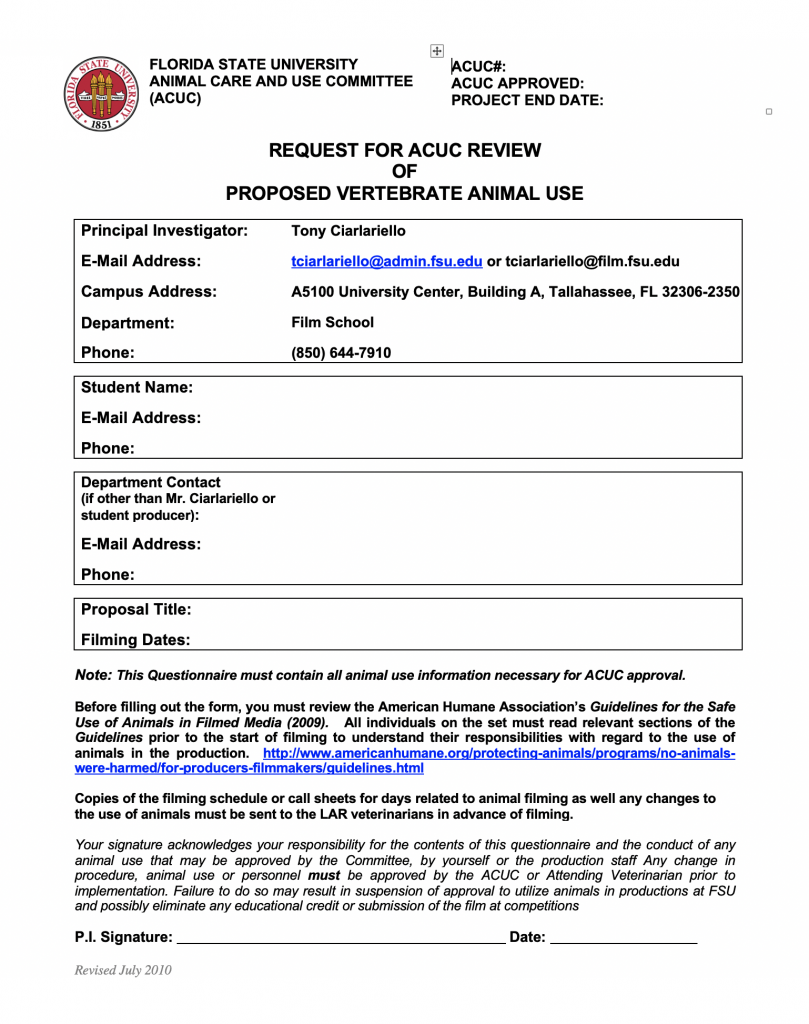
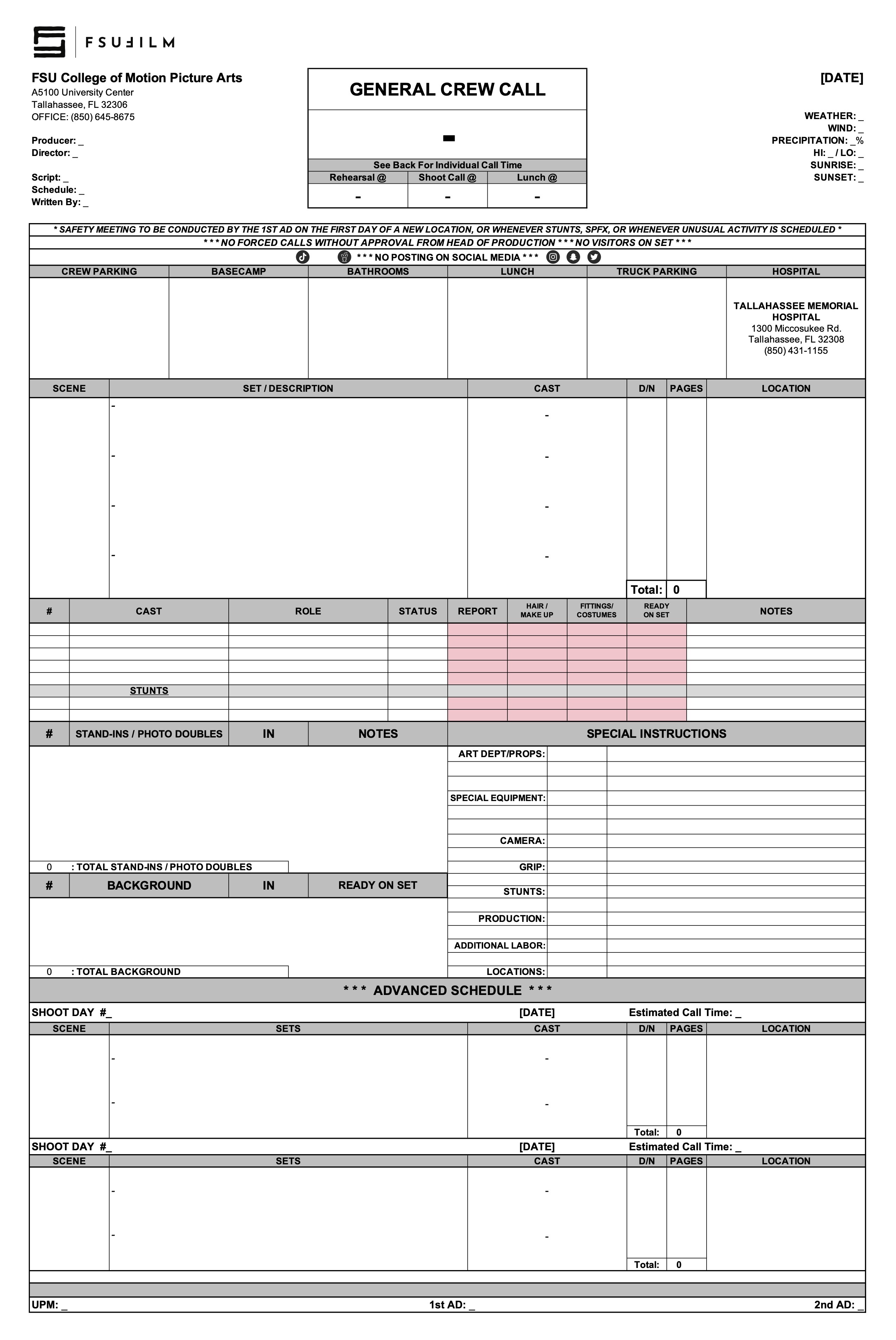
The purpose of the call sheet is to provide all the pertinent information about the next day’s production. The Second Assistant Director is responsible for distributing a PDF of each day’s call sheet to the cast, crew, faculty, and FSU police. If the production does not have a dedicated Second Assistant Director, the First Assistant Director or Producer shall assume the responsibility.
Call sheets, along with any relevant additional information such as maps or safety bulletins, must be distributed no later than 12 hours before call time on the first day of production and no later than the previous day’s company wrap for all subsequent days. It is important to thoroughly check — and double-check — and triple-check — that all the information in the call sheet is correct before it is sent out, because the distribution of revisions can create confusion.
Call sheets should be distributed with a subject line that follows this naming convention: 01f3-Film Title - Call Sheet - Day 1
You may include a brief, executive summary of important information in the body of the message, but this should not be a substitute for providing all relevant information in the call sheet itself.
Call sheets must be distributed in two ways:
Update accordingly for subsequent days. For instance, you no longer need to introduce yourself after day 1.
_________________________________________
SUBJECT: 01f3-Film Title – Call Sheet – Day 1
Hello 01F3 Team!
We hope everyone is excited to get working on, (“Film Title”), directed by (First Last Name).
My name is (First Last) and I am the (Position) for this film. I will be sending out call sheets, location directions, and general information each day of the shoot. When you arrive on set you will sign in with me and you will check out with me at the end of your day.
Attached are the call sheet, location info and parking instructions for tomorrow. Note, the location is approximately ## minutes away from the film school. Depending on your departure location, please plan accordingly. If you are part of a carpool, please ensure you allow extra time for pick-ups and drop-offs.
*Please read the call sheet thoroughly for specific information.
*Please arrive at least 15 minutes prior to your call time to ensure you have time to park and check in with me on time.
CREW CALL: 7:00AM
CAST CALL: See Below
(First Last) your call time is 7:45 AM
(First Last) your call time is 8:15 AM
FILMING LOCATION
Address: #### Somewhere St, City, FL, Zip
*Insert Google Maps Link here.
CREW/CAST PARKING
Add VERY specific instructions for parking here.
TRUCK PARKING
Add VERY specific instructions for parking here.
LOCATION NOTES
(Sample) Please DO NOT WALK ON THE GRASS. This is a specific request from the location owner.
(Sample) Dogs on site (they will be contained)
(Sample) Please keep exterior noise to a minimum.
DOCUMENTS ATTACHED TO EMAIL
-Call Sheet
-Location Map
-Location Parking Diagram
-Safety Bulletins: #5, #10
If you have any issues getting to set, or any questions whatsoever, please do not hesitate to call my number below.
We look forward to working with you!
Best,
(First Last)
(Your Position)
Cell: (###) ###-####
@FSU Email
(First Last)
Producer
Cell: (###) ###-####
@FSU Email
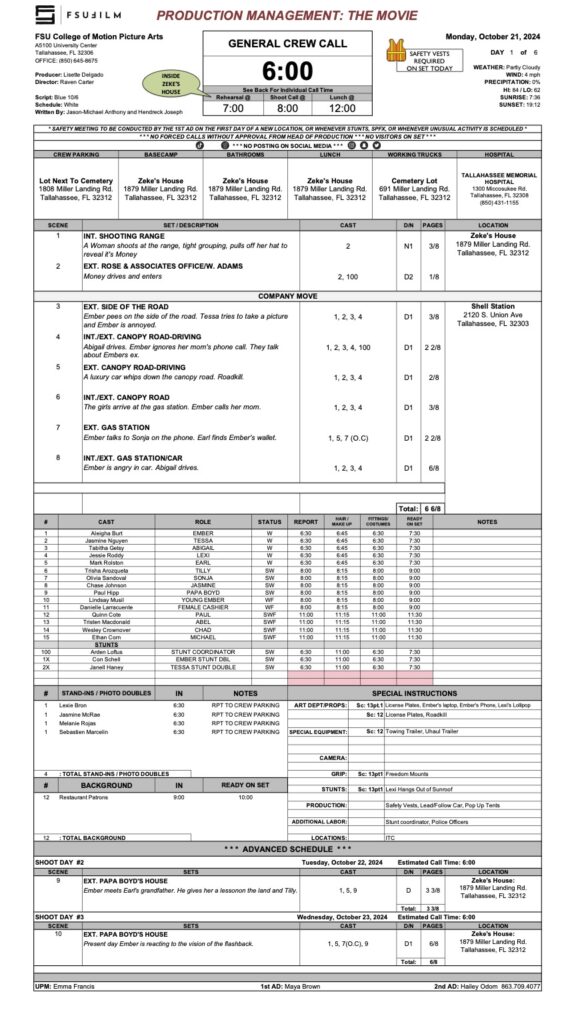
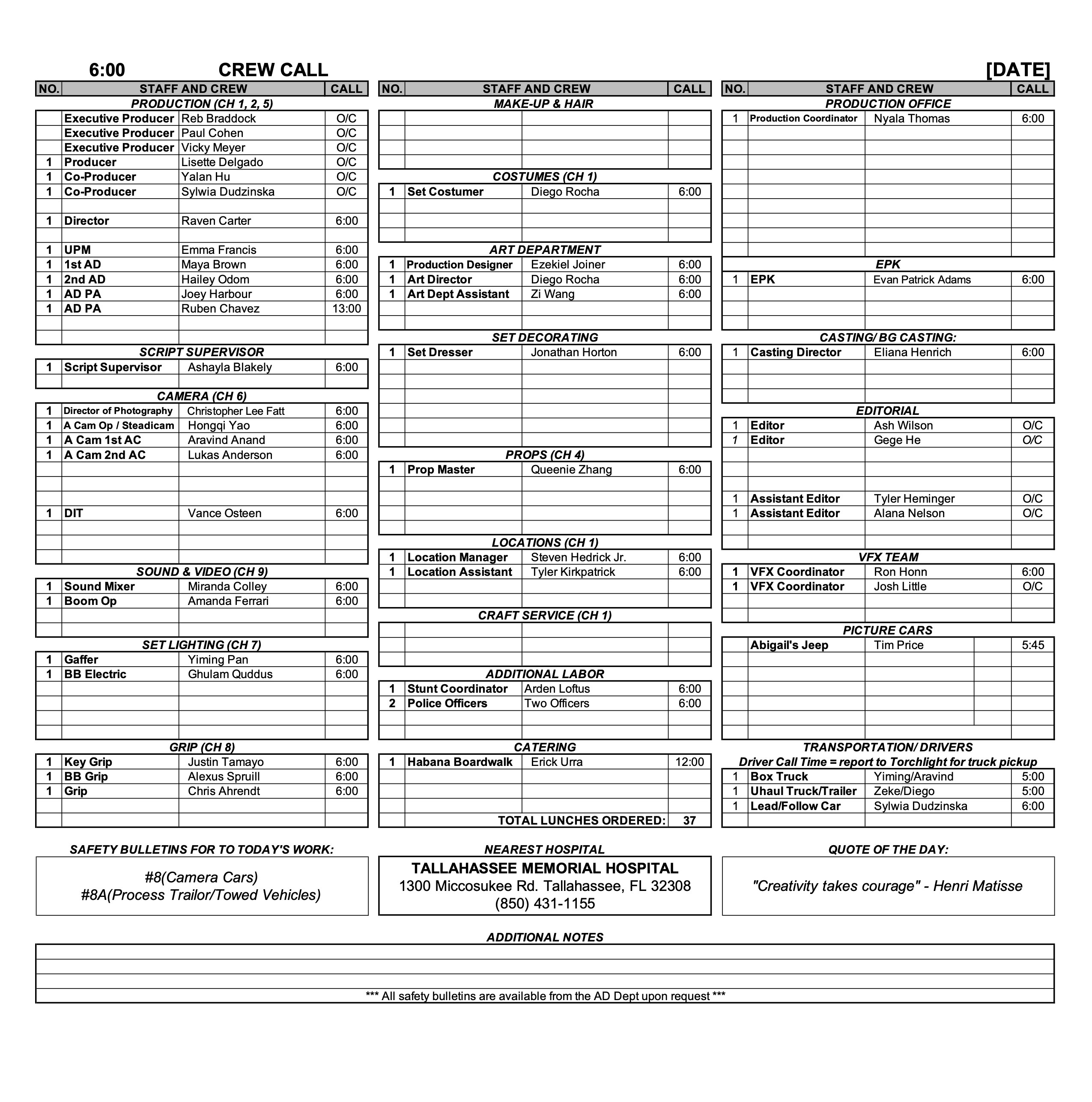
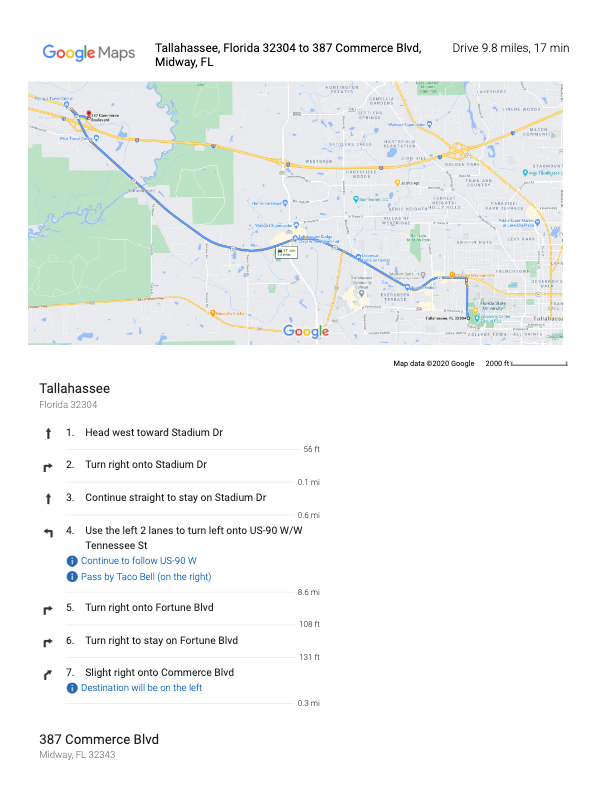
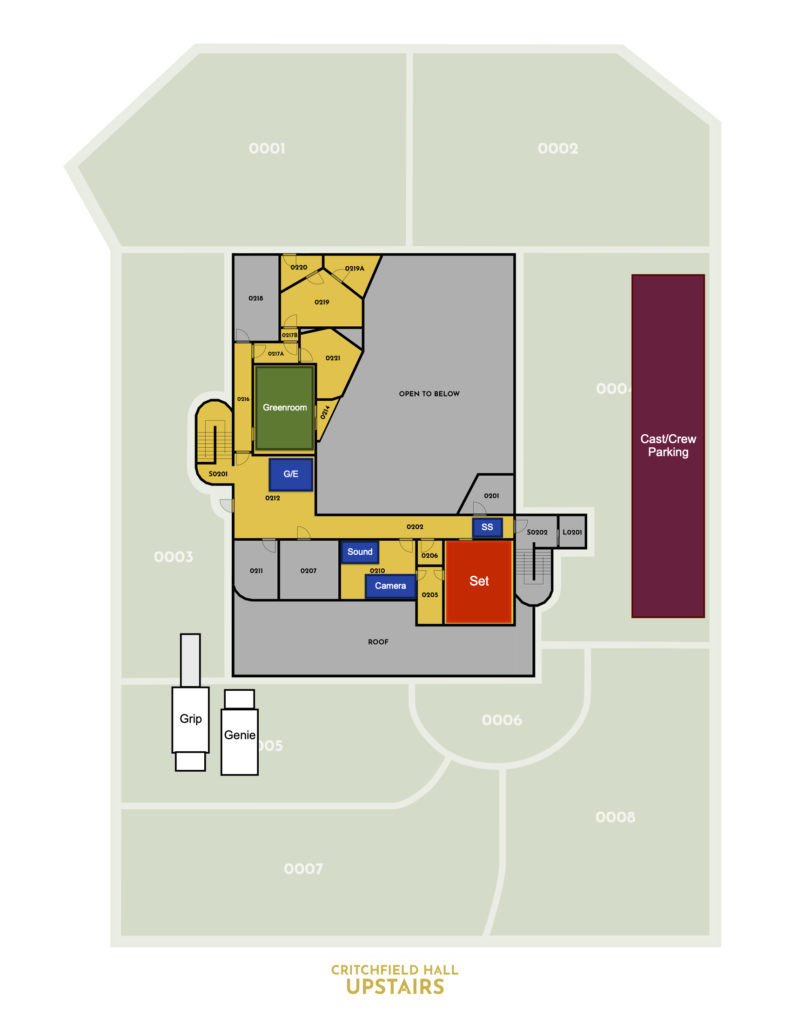
Thank you for considering allowing one of our students to use your property as a filming location. Each year, our students create nearly 200 films, and your generosity makes this possible. We value your time and support, and we are committed to maintaining the highest standards of professionalism, safety, and respect for your property.
A typical student film crew includes 12-15 students, plus actors and possibly a few additional volunteers. Please feel free to ask the student for a specific headcount of crew, cast, and support personnel.
Film productions require various equipment, including cameras, lights, sound gear, stands, cables, sandbags, rigging, dollies, and sometimes generators. Our students are trained to handle this equipment safely. They will confirm with you in advance where vehicles (trucks and cars) can be parked and where equipment can be staged.
A standard shoot day is up to 12 hours, plus a one-hour lunch break. Crews typically arrive about 30 minutes before the official start time and take an additional 30 minutes afterward for cleanup and packing. Students may also visit the location on separate days for planning, tech scouting, or set dressing. They will confirm with you in advance the start and end times for each prep and shoot day.
If you choose to allow the use of your property, here’s what to expect in terms of paperwork:
The student will provide a copy of the script and answer any questions about the project, including sensitive content.
Together, you and the student will complete an agreement which outlines:
This legal document grants permission to use your property and waives your liability in the event of a student injury during production.